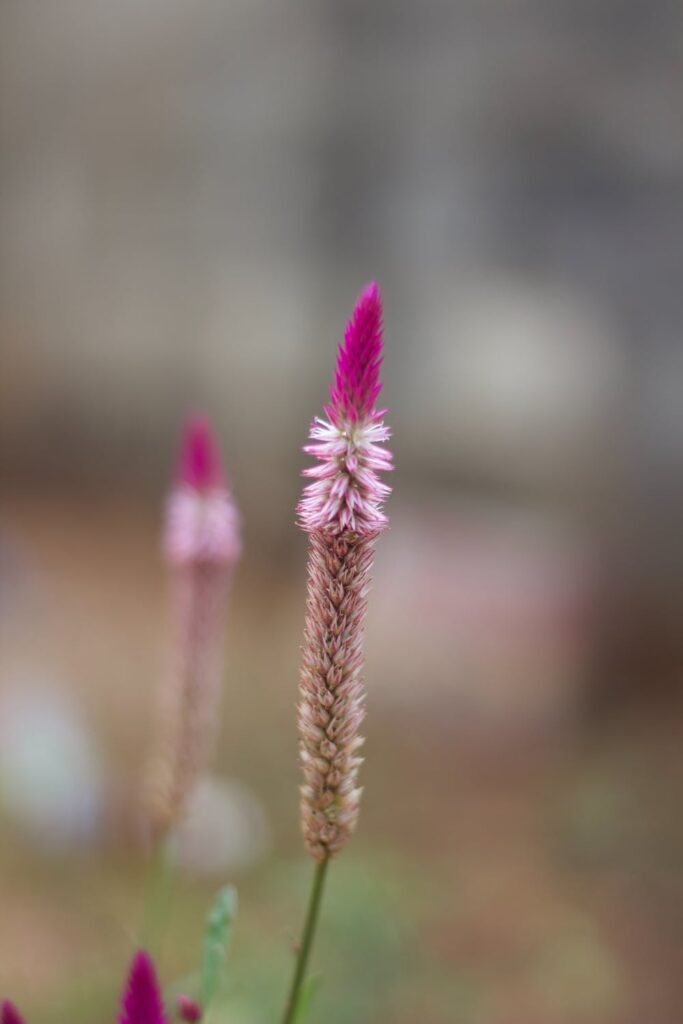Celosia argentea, also known as silver cockscomb or plumed celosia, is a stunning flowering plant that can be grown both indoors and outdoors. It belongs to the amaranth family and is native to tropical regions of Africa, Asia, and South America. Celosia argentea is a popular plant among gardeners and plant enthusiasts because of its unique, bright and colorful flowers that come in shades of pink, orange, yellow, red, and purple.
Growing Celosia argentea indoors is not only a great way to bring a pop of colour to your indoor space but also a fun and rewarding gardening experience. In this article, we’ll go over everything you need to know about growing Celosia argentea indoors, including its preferred growing conditions, soil requirements, watering needs, and tips for caring for the plant.


Table of Contents
Preferred Growing Conditions
Celosia argentea thrives in warm and humid conditions, making it an ideal plant for indoor growing. The plant requires bright, indirect light for at least six hours a day, so place it near a window that receives plenty of natural light. However, make sure to protect it from direct sunlight, as it can scorch the leaves and flowers.
The ideal temperature range for Celosia argentea is between 65 and 75 degrees Fahrenheit (18 to 24 degrees Celsius). It can tolerate slightly cooler temperatures, but avoid exposing it to temperatures below 55 degrees Fahrenheit (13 degrees Celsius), as this can cause the plant to wither and die.
Humidity is crucial for the growth and health of Celosia argentea. The plant prefers high humidity levels of around 50% to 60%. You can increase humidity levels by misting the leaves regularly with a spray bottle or placing a tray of water near the plant.
Soil Requirements
Celosia argentea prefers well-draining soil that is rich in organic matter. The soil should be moist but not waterlogged, as excessive moisture can cause root rot and other fungal diseases. A soil mix that is specifically formulated for indoor plants is an excellent choice for Celosia argentea.
You can also mix your own soil by combining equal parts of peat moss, perlite, and vermiculite. This soil mix provides excellent drainage while retaining moisture and nutrients.
Planting and Repotting
When planting Celosia argentea, choose a pot that is at least 6 inches (15 cm) in diameter and has drainage holes at the bottom. Fill the pot with the soil mix, leaving about an inch (2.5 cm) of space at the top. Gently remove the plant from its container and place it in the center of the pot, making sure the top of the root ball is level with the soil surface. Backfill the pot with soil, pressing it gently around the plant to ensure it is secure.
Celosia argentea can grow quite quickly, so it may need to be repotted every year or so. To repot the plant, gently remove it from its current pot and shake off any excess soil. Place the plant in a new, slightly larger pot, and add fresh soil around it. Water the plant thoroughly after repotting.
Watering Needs
Watering is a crucial part of Celosia argentea care. The plant prefers moist soil but can’t tolerate waterlogged conditions. Water the plant when the top inch (2.5 cm) of soil feels dry to the touch. Avoid overwatering the plant, as this can cause root rot and other fungal diseases. During the growing season, which is typically spring and summer, Celosia argentea may require more frequent watering. During the winter months, when the plant is dormant, reduce watering to allow the soil to dry out slightly between waterings.
Fertilising celosia argentea
Fertilising is an essential aspect of Celosia argentea care. The plant benefits from regular feeding during the growing season, which is typically spring and summer. You can use a balanced, water-soluble fertiliser every two weeks or a slow-release fertiliser once a month to provide the plant with the necessary nutrients. However, avoid fertilising the plant during the winter months when it is dormant. Over-fertilisation can also harm the plant, so make sure to follow the instructions on the fertiliser package and never exceed the recommended dosage.
Pest control for celosia argentea
Celosia argentea is generally a hardy plant that is not prone to many pests. However, like any plant, it can sometimes attract pests such as aphids, spider mites, and mealybugs. You can control these pests by regularly inspecting the plant for signs of infestation and removing any affected leaves or stems. You can also use insecticidal soap or neem oil to control pests. Preventing pests from entering your indoor space in the first place is also crucial. Make sure to keep your indoor space clean and free of debris and regularly clean the plant’s leaves to prevent dust buildup, which can attract pests.
Conclusion
Growing Celosia argentea indoors is a fun and rewarding experience that can bring a pop of colour to your indoor space. To successfully grow and care for this plant, it’s essential to provide it with the right growing conditions, soil requirements, watering needs, and pest control. Celosia argentea thrives in warm and humid conditions and prefers well-draining soil that is rich in organic matter. Watering the plant correctly and fertilising it during the growing season are essential for its health and growth. Regularly inspecting the plant for signs of pest infestation and controlling them is also necessary to keep the plant healthy. By following these tips and guidelines, you can enjoy the stunning beauty of Celosia argentea in your indoor space.

Can Celosia Be Grown Indoors - Back Gardener
Sunday 19th of May 2024
[…] their vibrant colors and unique shapes, celosia flowers are a great addition to any indoor space. To create a stunning indoor celosia display, start by choosing a container […]